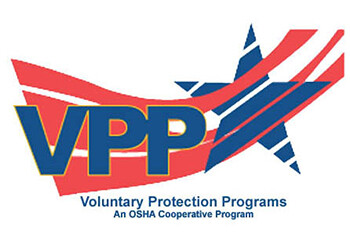The OSHA Voluntary Protection Program promotes a culture of positive and proactive worksite-based safety and health. The VPP process establishes a cooperative relationship between management, labor, and OSHA. VPP sites have a systematic structure on doing things efficiently, leading to production quality improvements, lower equipment, facility and product damages, and downtime. Employers that participate in VPP are removed from OSHA’s programmed inspection list, meaning that VPP employers only receive an OSHA inspection in response to a severe injury, death, or employee complaint.
Written Health and Safety Management System Review: TES provides our clients with a team of engineers, industrial hygienists, and safety professionals to evaluate their safety and health program and provide recommendations for meeting the requirements for VPP approval.
Onsite Evaluation: Our team will conduct a thorough onsite evaluation to identify any worksite deficiencies and conduct employee interviews to evaluate employee participation and management commitment.
VPP Self-assessment/Application: We can help in the application process to ensure an accurate application that will match your onsite audit, meeting OSHA expectations for compliance
VPP Opening/Closeout Conference: After the assessment we can help our clients develop opening and closeout conferences to demonstrate their proactive safety culture and highlight their goals and achievements.
According to the OSHA Office of Cooperative and State Programs, the injury and illness rates at VPP sites are 52 percent below industry norms on average and the average lost workday incident rate is 50% below the average of its industry. These sites do not typically start with such low rates. Reductions in injuries and illnesses begin when a facility commits to the VPP approach to safety and health management and the challenging VPP application process. Fewer injuries and illnesses can reduce both direct and indirect costs. Reducing injuries and illnesses can:
A VPP applicant is required to have a comprehensive safety and health management system consisting of four basic elements and sub elements. The four basic elements are management leadership and employee involvement, worksite analysis, hazard prevention and control, and safety and health training.
